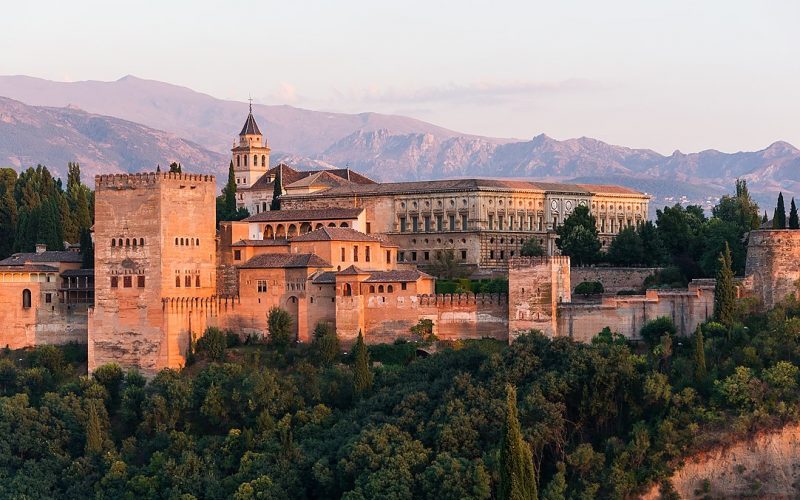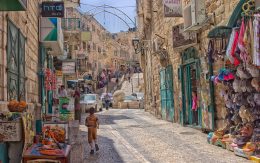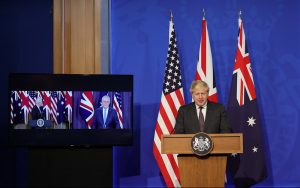The Muslim Golden Age is a historiographical creation like many other conceptions that influence our view of Medieval history. Muslim culture and civilisation flourished throughout an age of exception stability and wealth until at least the early thirteenth century (Kafadar, 2010). To be more specific, the Golden Age highlights the greatest achievements accomplished by the Muslim world between the ninth and thirteenth centuries, with the Ottomans and Mughals, who are normally disregarded, being included as part of this time period.
Such a viewpoint has several flaws. According to said person, the period between the eighth and thirteenth centuries was a time of tolerance, cultural growth, as well as of political harmony and religious acceptance (Kafadar, 2010). As a result, the Golden Age narrative tends to forcefully paint scientific achievements as Islamic contributions, which not only unnecessarily makes it a clash of religious fundamentalism from a presentist point of view, it provides an ideological armour to the post-modern Islamic world. These claims of tolerance, cultural growth, Islamic scientific achievements and political harmony directly contradict many historical facts that one encounters when reading about societies and civilisation living under Muslim rule. The following paper will elucidate the premise of historiographically inventing the Islamic Golden Age and how it impacts contemporary Islamic perception of scientific contribution. I will argue that the Golden Age narrative is not only problematic, it creates further divisions and represents a homogenised perception of the so-called Islamic civilisation.
When offering these Golden Age narratives too frequently within academic historical discussions, a rewriting of official history takes place, which suppresses marginalised factions who have had difficult experiences in that particular time period. The Golden Age viewpoint is problematic because it serves as a direct response to various intellectual, religious and political issues encountered by the Islamic world in contemporary times. Historical narratives that focus on the Golden Age in Islam serve as a valuable repository for the ‘greatness of Islamic civilisation’ while also serving as a safe haven for Muslims who want to refute popular misconceptions like death, depravity, extremism and anarchy that Islam has always been marked by. Hence, one of the most common ways Muslims try to dispel Orientalist notions regarding the decline of the Muslim civilisation is to promote the idea that the Middle East once enjoyed an illustrious and glorious Muslim Golden Age during which civilisation flourished for centuries fuelled by Islamic ideology.
Orientalist academics, however, were not the first to propose a narrative that focussed on discussing the decline of Muslim civilisation, as many of them were instrumental in promoting interest in the Golden Age of Islam (McLaughlin, 2018). This idea is then absorbed by Orientalist academics to mainstream Islamic scholars who propagate and promote the notion of a Golden Age which fundamentally functions as a reaction aimed at providing Muslims with an intellectual weapon that can combat modernist attacks on their civilisation. However, the Golden Age narrative has the unfortunate tendency to obscure historical truths in order to further its own limited ideological goals. By making such generalisations about Muslim history and culture, it is impossible to discern any specifics about the period between the ninth and eighteenth centuries, when Muslims were thought to have reached the pinnacle of civilisational advancement (Hirschkind, 2001). At this point, the Golden Age narrative limits the study of the history of scientific advancement and is no longer a critical intellectual effort but rather a polemic discourse with an apologetic attitude.
Criticizing the Golden Age narrative does not imply that other historical perspectives, such as the Renaissance or the Dark Ages, are not historiographical constructions. They are also the outcome of historiographical constructs that are intended to promote a certain hegemonic discourse, which in turn separates and demarcates, giving rise to ideologies such as the West and the Rest. In any case, there is no denying that scientific progress was observed in the Muslim World; however, to establish strict binaries such as the Dark Ages, which saw Europe in ruins while Islamic civilisation prospered, followed by the decline of the Muslim Empire, which was contrasted with the rebirth of European civilisation are superficial historical generalisations that tend to establish ignorance and unwarranted hatred. As a result, critically analysing such points of view and narratives is an academic requirement.
Apart from the notion that scientific advancement was monopolised by the Muslim World during their Golden Age, omnipresent tolerance is another example of the Golden Age perspective’s skewed view of Muslim history. The premise that tolerance, religious harmony and epistemology were exclusive to the Muslim World during the Golden Age is historically incorrect. Many proponents of an “Islamic Golden Age” believe that Salahuddin Ayyubid was the most tolerant man of his day, and this is an often-heard claim (Berend & Nora, 2001). Also, the claim that religious tolerance was non-existent in Christian Europe but that it was a thriving phenomenon in Muslim rule is deeply flawed. The same claims are made even in more prestigious intellectual circles but with more nuanced arguments and sources (Crow, 2012). However, a genuine historical examination of medieval history will demonstrate that Salahuddin was not quite the oddity that he is typically depicted as being. Several non-Muslim kings from the twelfth and thirteenth centuries come to mind while evaluating his reign. Examples include Alfonso VI of Castile-Leon, James I of Aragon, and Roger II of Sicily, all of whom tolerated large populations of Muslims and Jews living under their rule; Alfonso VI adopted the title “Emperor of the Two Religions” to emphasise his commitment to his Muslim subjects, and Roger II was known as “the baptised sultan”. There were more Muslims living under Christian control in Spain in the fourteenth century than there were Muslims living under Muslim rule. It was during this time period that Yca de Segovia (ca. 1450) created an important codex of Islamic law for Hispano-Muslims, the Brevario Sunna. But these facts are troublesome for many Muslims who want to promote the “Golden Age” worldview because they weaken their focus on an Islamic uniqueness, which Saladin is perceived as symbolising, and undermine it (Menocal, 2009).
In the Middle Ages, ‘tolerance’, understood strictly in the mediaeval context of acknowledging the presence, but not the validity, of ‘the other’, may be found on both sides of the civilizational divide. It had both supporters and detractors in the Christian and Islamic worlds. Furthermore, the practice was not always consistent with theory. Because of this, making claims about the intrinsic tolerance of Christendom or Muslim civilisation (which need not be limited to Europe) is absurd (or intolerant).
It is difficult to define tolerance in the mediaeval environment, but it stretches much beyond the count of atrocities or instances of cohabitation on either side of the civilizational divide. Because of this, it was a dynamic system that could be used at various points in time for various purposes. In the Middle Ages, there was no concept or principle of tolerance that could be compared to the current concept or principle of tolerance, much less imposed as a final category. Paradigms of the “Golden Age” assume not only that tolerance existed but that it was the exclusive domain of one particular culture. The presentation of Saladin as a paradigm of tolerance is a good illustration of the problem. There are certain important parts of his career that “Muslim Golden Age” proponents fail to emphasise despite the fact that he was “tolerant” (a better term would be chivalrous) towards his foes.
During the Battle of Hattin in 1187, Saladin proved that he was no less ferocious than any European king of the period, executing hundreds of soldiers who were not armed. Indeed, his primary purpose was to retaliate against the Crusader invasion of 1099, which was still fresh in the thoughts of many Muslims at the time of his arrival in Jerusalem in 1497. On the other hand, he demanded that many Christian residents of Jerusalem be sold into slavery as a condition of capitulation (unless they could buy their freedom; the ransom was ten dinars for men, five for women, and one for children). When Shihab al-Din Suhrawardy (who died in 1191) was put to death (by crucifixion) for defying the accepted “orthodoxy,” hundreds of thousands of books were taken from Cairo’s Fatimid libraries by his army and burnt. Even by the norms of mediaeval Muslim tolerance, this is hardly a commendable sign. Both Bahauddin’s contemporaneous ‘Life of Saladin’, as well as Imad al-Din al-contemporaneous Isfahan’s account of the Crusades, make these facts abundantly obvious in the contemporaneous record. What a let-down after everything that Saladin’s tolerance had to offer! An intriguing side note is that Saladin’s mythology as a “chivalrous knight” and a model of tolerance was popularised in part by European Orientalists in the late nineteenth century (Moore, 2008).
Tolerance and peaceful cohabitation were commonplace in Islamic Spain (Al-Andalus), according to Islamic Golden Age authors. There was a considerable lot of religious cooperation in mediaeval Spain, and several notable instances of toleration can be found there. However, there was also a tremendous quantity of intolerance there. Al-Andalus was the scene of some of the most heinous acts in Islamic history. Nearly 4,000 Jews were massacred in Granada in 1066 by a Muslim mob, the continent’s first major pogrom, while the Almohad dynasty enforced all Jews and Christians in Al-Andalus and North Africa to convert to Islam (or face exile), including the Jewish philosopher Moses Maimonides, one of the most important of these exiled Jews (d. 1204). Ibn Rushd and Ibn Ghazali’s books were publicly burnt in the courtyard of the Great Mosque of Cordoba, along with works by other Muslim thinkers. Also, the Martyrs of Cordoba and the devastation of Santiago de Compostela illustrate that Al-Andalus was not only a paradise of tolerance (Moore, 2008). There are many examples in Andalusia civilization of repressive institutions such as slavery and social inequality. Al-Andalus was not an oasis of tolerance, as some anti-Islamic intellectuals have claimed, but it was also not a land of war and famine, as some anti-Islamic intellectuals have claimed.
Similarly, Iranian, Turkish, and South Asian Muslim history is littered with incidents of intolerance and massacres. Following his conquest of Delhi in 1399, Timur is claimed to have left behind numerous towers of 100,000 skulls. Shi’i philosophy was ruthlessly enforced by the Safavid dynasty and the Ottoman sultan Selim I between 1501 and 1520 in Iran and Anatolia, respectively, killing thousands of Sunnis in the process. Another example of intra-Muslim intolerance is seen in the mutual ex-communication of the Safavid and Ottoman Empires. But this catalogue of horrors does not imply we should use these developments to build a picture of mediaeval Muslim culture as barbarism and intolerant stronghold. This series of atrocities would make any sane person question the formation of a great narrative of Islamic history based on these examples of tolerance and peace (Bruce, 2012).
The tolerance of mediaeval and early modern Islamic society and the brilliant examples of art and literature that were generated via interfaith and intercultural collaboration, hundreds of instances might be used to ‘display’ Islamic civilization’s brutality. Irresponsible is it to use either the instances of ‘tolerance’ or the examples of ‘intolerance’ as part of an attempt to portray the Muslim world in a certain (polemical) light. One must keep in mind that, in addition to their intellectual achievements, these dynasties and cultures were also known for their extreme intolerance, and this fact should not be overlooked. As a reminder of the ineffectiveness of ‘Golden Age’ (or ‘Dark Age’) paradigms, it’s worth noting that “tolerance” and “intolerance” are frequently by-products of the same civilization, which is why it’s important to pay attention to this. To make matters worse, in its quest to paint a beautiful image of Islam’s past, the ‘Muslim Golden Age’ narrative fails to take into account the realities of Muslim cultures and history. Anti-Islamic propagandists use the same tactic to discredit Muslims today, bringing out the less-than-rosy examples from the Muslim past. There is no way to classify a society as ‘tolerant’ or ‘intolerant’, and that’s an admission of profound ignorance about human communities. To keep it in the domain of the polemic or apologetic is the wisest course of action.
Sources Berend, N. and Nora, B., 2001. At the gate of Christendom: Jews, Muslims and’pagans’ in medieval Hungary, C. 1000-C. 1300. Cambridge University Press. Bruce, S., 2012. William T. Cavanaugh, The Myth of Religious Violence: Secular Ideology and the Roots of Modern Conflict (Oxford and New York: OUP, 2009), pp. x+ 285. $49.95. Scottish Journal of Theology, 65(1), pp.110-111. Crow, K.D., 2012. Reza Shah-Kazemi. The Spirit of Tolerance in Islam. ICR Journal, 3(4), pp.756-758. Hirschkind, C., 2001. Tradition, Myth, and Historical Fact in Contemporary Islam. ISIM newsletter, 8(1), pp.18-18. Kafadar, C., 2010. The Myth of the Golden Age: Ottoman Historical Consciousness in the PostSüleymânic Era (pp. 37-48). Gorgias Press. McLaughlin, I., 2018. ” Some Dreamers of the Golden Dream”: The Construction of the Golden Age Myth (s) in the Age of Ottoman Decline. The Thetean: A Student Journal for Scholarly Historical Writing, 47(1), p.4. Menocal, M.R., 2009. The ornament of the world: How Muslims, Jews, and Christians created a culture of tolerance in medieval Spain. Back Bay Books Moore, R.I., 2008. The formation of a persecuting society: authority and deviance in Western Europe 950-1250. John Wiley & Sons.








Be First to Comment